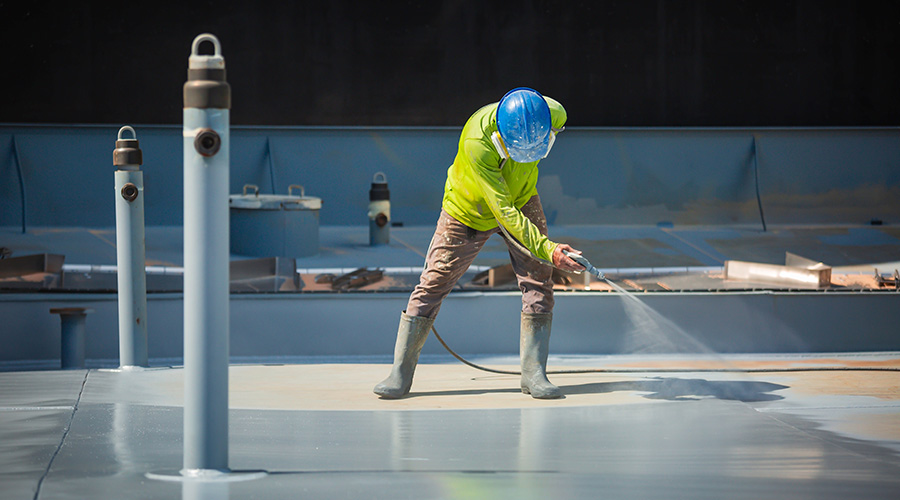Protecting Parking Garages with Sealers and Coatings
Preventative measures involving the use of sealants and coatings can stop damage before it ever occurs
By James Piper, Contributing Writer
OTHER PARTS OF THIS ARTICLEPt. 1: This Page
The decks of parking garages are subjected to damaging conditions that can lead to deterioration of the concrete. Vehicle traffic, foot traffic, weather conditions, water, and exposure to chemicals take their toll on deck surfaces and structures. Without an ongoing maintenance program that includes preventative steps to protect the concrete from these conditions, deterioration will take place. It may start slowly, but if left uncorrected, it will accelerate over time resulting in the need for expensive repairs or even catastrophic failure.
When it comes to parking garage maintenance, one of the biggest concerns is corrosion. Corrosion takes place when moisture and salt carried in by vehicles penetrates the concrete and comes in contact with the reinforcing steel. Over time, the formation of rust on the steel puts pressure on the concrete and can result in the formation of cracks and spalling. Uncorrected, it can compromise the structural integrity of the slab. Moisture penetration into the concrete also can result in chemical reactions that cause cracking, softening, and loss of strength in the concrete.
The most effective approach to limiting damage to garage decks is by stopping it before it can occur. That means preventative measures involving the use of sealants and coatings must be implemented even if there is no apparent damage to the concrete; ideally starting when the garage structure is new. And sealants and coatings are not a simple, one-time task. They will have to be repeated on a regular basis if the concrete is to be protected.
Selecting a sealer
Where should sealants and coatings be used? It is recommended that they be applied to all above grade concrete deck surfaces. The damage to parking garage concrete often appears on the underside of the deck, but it is almost always caused by moisture that gains access to the concrete from the upper surface. It is not recommended that they be applied to the bottom of the decks as that could cause moisture to become trapped in the concrete, accelerating deterioration. Similarly, it is not recommended that they be applied to slabs-on-grade as they will prevent the evaporation of ground moisture that penetrates the slab from beneath.
Maintenance managers have a number of options when selecting a sealant or coating depending on the condition and level of protection needed in their particular application. For example, new decks can be protected by using a lower cost sealer, while older garages with limited deterioration will require a more extensive coating system.
In all cases, managers must select a system that will be able to withstand the environment of the application, including the level of exposure to vehicle traffic, how much road salt is likely to be tracked into the garage and where, areas where pedestrian traffic is concentrated, the concrete’s direct exposure to sunlight. Managers must also determine how long the garage can be out of service while the sealant or coating is applied and allowed to cure. These factors will to a great extent determine the most appropriate system for that application.
Before committing to a particular type of coating or sealing system, it is important that the condition of the concrete be evaluated. New concrete decks and those in good condition can be protected with lower cost systems. Older concrete decks that have not been properly maintained or have developed significant deficiencies from water intrusion will require a more advanced and expensive protection system as well as repairs to structural damage.
Protecting a concrete parking garage deck is not a one-and-done activity. Sealants and coatings should be checked every few months for wear and deterioration. Concrete should be inspected annually and deterioration documented so that repairs can be made before the next scheduled sealant or coating application. By following these steps, managers can improve the odds that concrete deterioration can be stopped before it has a chance to develop.
James Piper, P.E., is a national consultant based in Bowie, Maryland. He has more than 35 years of experience with facilities maintenance, engineering and management issues.
Related Topics:












